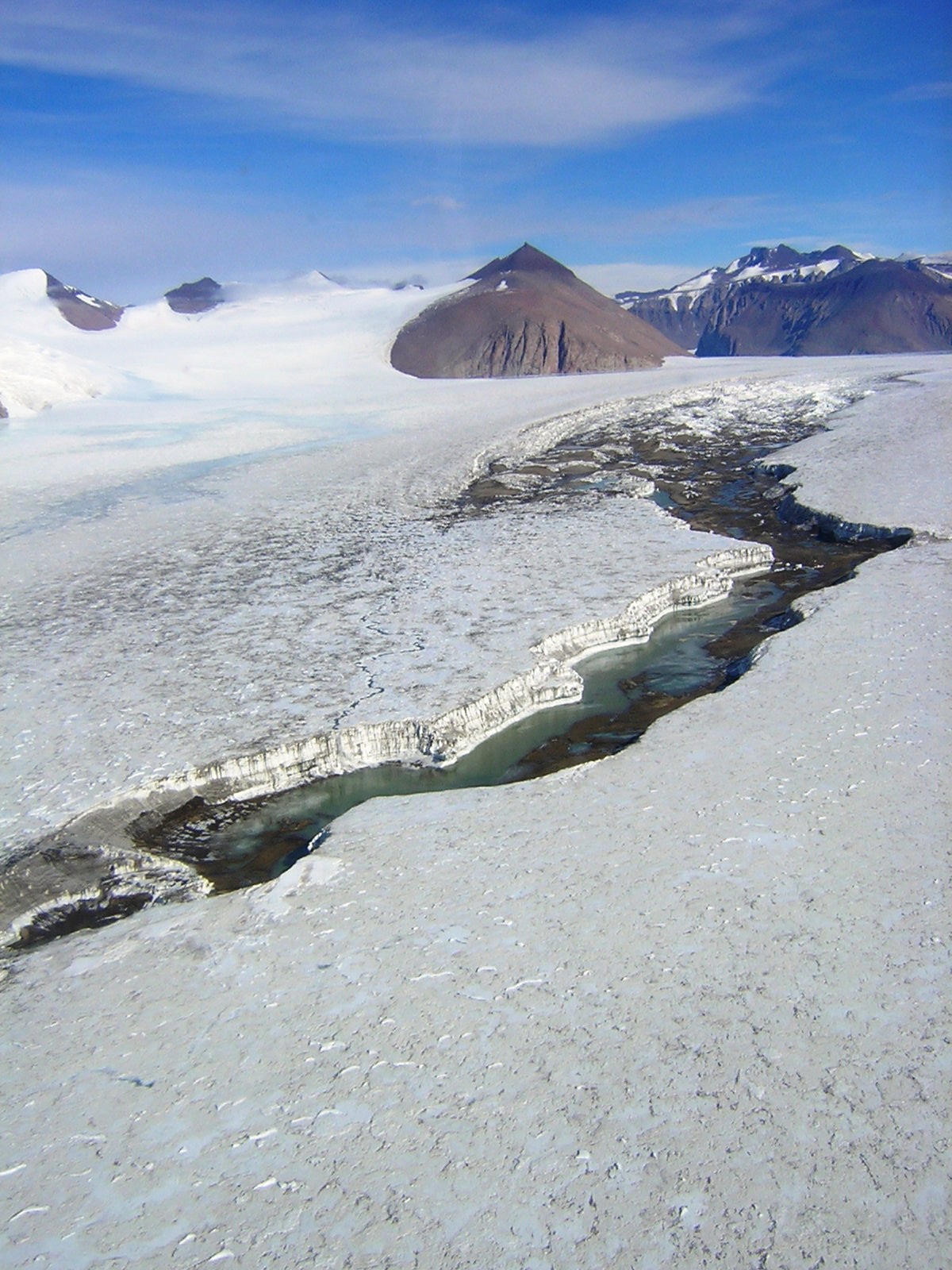- Press Office
- Glacier bacteria’s contribution to carbon cycling
Glacier bacteria’s contribution to carbon cycling
A new study, now published in the journal Nature Geoscience, shows how microbial communities in melting glaciers contribute to the Earth’s carbon cycle, a finding that has global implications as the bulk of Earth’s glaciers shrink in response to a warming climate.
The study was conducted by Heidi Smith and Christine Foreman of the Center for Biofilm Engineering in Montana State University’s College of Engineering, USA, Marcel Kuypers and Sten Littmann of the Max Planck Institute for Marine Microbiology in Bremen, Germany, and researchers at the University of Colorado at Boulder, the U.S. Geological Survey, Stockholm University in Sweden.
The paper challenges the prevailing theory that microorganisms found in glacial meltwater primarily consume ancient organic carbon that was once deposited on glacial surfaces and incorporated into ice as glaciers formed.

“We felt that there was another side to the story,” said Smith. “What we showed for the first time is that a large proportion of the organic carbon is instead coming from photosynthetic bacteria” that are also found in the ice and that become active as the ice melts, Smith said. Like plants, those bacteria absorb carbon dioxide and in turn provide a source of organic matter.
The research team made the discovery after sampling meltwater from a large stream flowing over the surface of a glacier in the McMurdo Dry Valleys region of Antarctica in 2012. Afterward, Smith spent two months at the Max Planck Institute for Marine Microbiology in Bremen, where she worked with colleagues to track how different carbon isotopes moved through the meltwater’s ecosystem, allowing the team to determine the carbon’s origin and activity.
The researchers ultimately found that the glacial microbes utilized the carbon produced by the photosynthetic bacteria at a greater rate than the older, more complex carbon molecules deposited in the ice, because the bacterial carbon is more “labile,” or easily broken down. The labile carbon “is kind of like a Snickers bar,” meaning that it’s a quick, energizing food source that’s most available to the microbes, Smith said.
Moreover, the researchers found that the photosynthetic bacteria produced roughly four times more carbon than was taken up by the microbes, resulting in an excess of organic carbon being flushed downstream. “The ecological impact of this biologically produced organic carbon on downstream ecosystems will be amplified due to its highly labile nature,” Foreman said.
Although individual glacial streams export relatively small amounts of organic carbon, the large mass of glaciers, which cover more than 10 percent of the Earth’s surface, means that total glacial runoff is an important source of the material. Marine organic carbon underpins wide-ranging ecological processes such as the production of phytoplankton, the foundation of the oceans’ foodweb.
As glaciers increasingly melt and release the organically produced, labile carbon, “we think that marine microbial communities will be most impacted,” Smith said. “We hope this generates more discussion.”
In a “News and Views” commentary accompanying the article in Nature Geoscience, Elizabeth Kujawinski, a tenured scientist at Woods Hole Oceanographic Institution, called the team’s work “an elegant combination” of research methods.
Taken together with another study published in the same issue of Nature Geoscience, about microbial carbon cycling in Greenland, Smith’s paper “deflates the notion that glacier surfaces are poor hosts for microbial metabolism,” according to Kujawinski. The two studies “have established that microbial carbon cycling on glacier surfaces cannot be ignored,” she added.
Original publication
H. J. Smith, R. A. Foster, D. M. McKnight, J. T. Lisle, S. Littmann , M. M. M. Kuypers und C. M. Foreman: Microbial formation of labile organic carbon in Antarctic glacial environments. Nature Geoscience. DOI: 10.1038/ngeo2925
Begleitender News & Views
E. Kujawinski: The power of glacial microbes. Nature Geoscience. DOI: 10.1038/ngeo2933
Participating institutes
Montana State University, Bozeman, Montana 59717, USA
Stockholm University, Stockholm 10691, Sweden
Max Planck Institute for Marine Microbiology, Bremen 28359, Germany
University of Colorado, Boulder, Colorado 80309, USA
US Geological Survey, St Petersburg, Florida 33701, USA
Please direct your queries to
Press & Communication
Dr. Fanni Aspetsberger
Dr. Manfred Schlösser
Phone: +49 421 2028 704
E-Mail: [Bitte aktivieren Sie Javascript]
Head of Press & Communications
MPI for Marine Microbiology
Celsiusstr. 1
D-28359 Bremen
Germany
|
Room: |
1345 |
|
Phone: |
